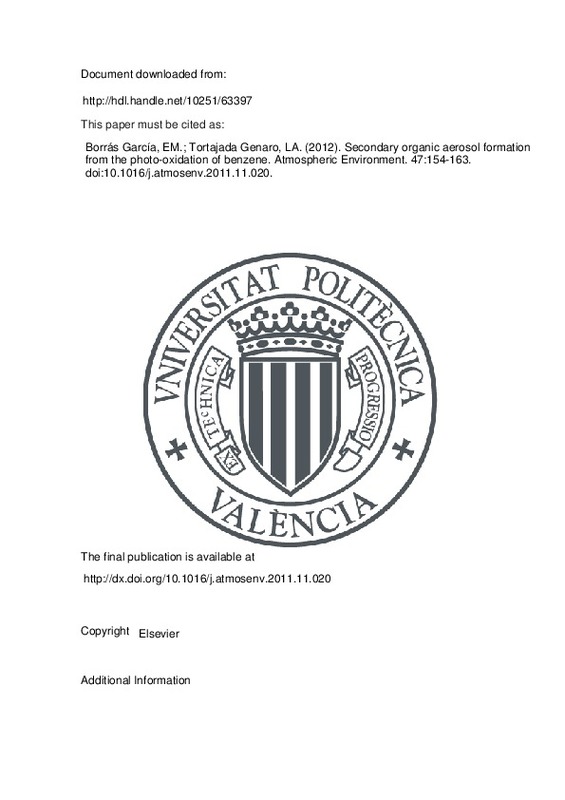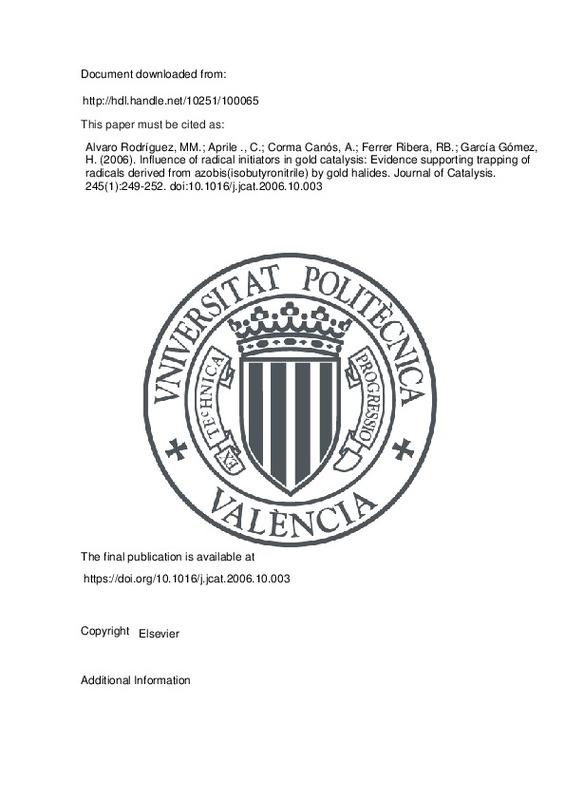JavaScript is disabled for your browser. Some features of this site may not work without it.
Buscar en RiuNet
Listar
Mi cuenta
Estadísticas
Ayuda RiuNet
Admin. UPV
A photophysical approach to investigate the photooxidation mechanism of pesticides: Hydroxyl radical versus electron transfer
Mostrar el registro sencillo del ítem
Ficheros en el ítem
| dc.contributor.author | Marín García, Mª Luisa
|
es_ES |
| dc.contributor.author | Lhiaubet, Virginie Lyria
|
es_ES |
| dc.contributor.author | Santos-Juanes Jordá, Lucas
|
es_ES |
| dc.contributor.author | Soler Escoda, Juan Miguel
|
es_ES |
| dc.contributor.author | Gomis Vicens, Juan
|
es_ES |
| dc.contributor.author | Arques Sanz, Antonio
|
es_ES |
| dc.contributor.author | Amat Payá, Ana María
|
es_ES |
| dc.contributor.author | Miranda Alonso, Miguel Ángel
|
es_ES |
| dc.date.accessioned | 2014-05-16T17:16:25Z | |
| dc.date.issued | 2011-03-14 | |
| dc.identifier.issn | 0926-3373 | |
| dc.identifier.uri | http://hdl.handle.net/10251/37529 | |
| dc.description.abstract | [EN] The role of hydroxyl radical in different solar photocatalytic processes, namely photo-Fenton, titanium dioxide-based oxidation and organic photocatalysis (triphenylpyrylium) has been investigated. Using a methodology based on the flash photolytic generation of OH. from N-hydroxypyridine-2(1H)-thione, followed by t-stilbene trapping, the reaction rate constants of different pesticides (dimethoate, methidathion, alachlor and pyrimethanyl) with this reactive oxygen species in deaerated acetonitrile have been determined. The results obtained under photo-Fenton conditions are in reasonable agreement with the estimated rate constants; hence the assumption that the photo-Fenton reaction mainly involves participation of the hydroxyl radical seems plausible. The oxidation pattern using titanium dioxide was also investigated; however, under these conditions no clear correlation could be found due to participation of an alternative electron transfer mechanism.Finally, pyrimethanil was the most reactive pesticide when photodegradation was carried out in the presence of TPP, in spite of its low reactivity towards hydroxyl radical. Laser flash photolysis experiments evidenced that the reaction occurs via photoinduced electron transfer within a ground state complex; this is in good correlation with the relative amount of pyranyl radical formation. © 2011 Elsevier B.V. | es_ES |
| dc.description.sponsorship | Financial support from the Spanish Government (Projects CTQ2009-13699 and CTQ2009-13459-C05-03) is gratefully acknowledged. | |
| dc.format.extent | 6 | es_ES |
| dc.language | Inglés | es_ES |
| dc.publisher | Elsevier | es_ES |
| dc.relation.ispartof | Applied Catalysis B: Environmental | es_ES |
| dc.rights | Reserva de todos los derechos | es_ES |
| dc.subject | Hydroxyl radical | es_ES |
| dc.subject | Laser flash photolysis | es_ES |
| dc.subject | Photo-Fenton | es_ES |
| dc.subject | Titanium dioxide | es_ES |
| dc.subject | Triphenylpyrylium | es_ES |
| dc.subject | Alachlor | es_ES |
| dc.subject | Dimethoate | es_ES |
| dc.subject | Electron transfer | es_ES |
| dc.subject | Good correlations | es_ES |
| dc.subject | Hydroxyl radicals | es_ES |
| dc.subject | Hydroxypyridine | es_ES |
| dc.subject | Methidathion | es_ES |
| dc.subject | Photo-Fenton reactions | es_ES |
| dc.subject | Photo-induced electron transfer | es_ES |
| dc.subject | Photocatalytic process | es_ES |
| dc.subject | Photooxidation mechanism | es_ES |
| dc.subject | Photophysical | es_ES |
| dc.subject | Pyrimethanil | es_ES |
| dc.subject | Radical formation | es_ES |
| dc.subject | Reactive oxygen species | es_ES |
| dc.subject | Acetonitrile | es_ES |
| dc.subject | Electron transitions | es_ES |
| dc.subject | Oxides | es_ES |
| dc.subject | Oxygen | es_ES |
| dc.subject | Pesticides | es_ES |
| dc.subject | Photocatalysis | es_ES |
| dc.subject | Photolysis | es_ES |
| dc.subject | Photooxidation | es_ES |
| dc.subject | Rate constants | es_ES |
| dc.subject | Titanium | es_ES |
| dc.subject | Free radical reactions | es_ES |
| dc.subject.classification | INGENIERIA TEXTIL Y PAPELERA | es_ES |
| dc.subject.classification | QUIMICA ANALITICA | es_ES |
| dc.subject.classification | QUIMICA FISICA | es_ES |
| dc.subject.classification | QUIMICA ORGANICA | es_ES |
| dc.title | A photophysical approach to investigate the photooxidation mechanism of pesticides: Hydroxyl radical versus electron transfer | es_ES |
| dc.type | Artículo | es_ES |
| dc.embargo.lift | 10000-01-01 | |
| dc.embargo.terms | forever | es_ES |
| dc.identifier.doi | 10.1016/j.apcatb.2011.01.007 | |
| dc.relation.projectID | info:eu-repo/grantAgreement/MICINN//CTQ2009-13699/ES/MECANISMOS FOTOQUIMICOS DEL DAÑO AL ADN Y SU REPARACION. FOTOSENSIBILIZACION FRENTE A FOTOPROTECCION/ | es_ES |
| dc.relation.projectID | info:eu-repo/grantAgreement/MICINN//CTQ2009-13459-C05-03/ES/Integración de procesos de fotocatálisis solar en la depuración biológica de aguas residuales para la eliminación de contaminantes emergentes (EDARSOL)/ | |
| dc.rights.accessRights | Cerrado | es_ES |
| dc.contributor.affiliation | Universitat Politècnica de València. Departamento de Química - Departament de Química | es_ES |
| dc.contributor.affiliation | Universitat Politècnica de València. Departamento de Ingeniería Textil y Papelera - Departament d'Enginyeria Tèxtil i Paperera | es_ES |
| dc.contributor.affiliation | Universitat Politècnica de València. Instituto Universitario Mixto de Tecnología Química - Institut Universitari Mixt de Tecnologia Química | es_ES |
| dc.contributor.affiliation | Universitat Politècnica de València. Grupo de Procesos de Oxidación Avanzada | es_ES |
| dc.description.bibliographicCitation | Marín García, ML.; Lhiaubet, VL.; Santos-Juanes Jordá, L.; Soler Escoda, JM.; Gomis Vicens, J.; Arques Sanz, A.; Amat Payá, AM.... (2011). A photophysical approach to investigate the photooxidation mechanism of pesticides: Hydroxyl radical versus electron transfer. Applied Catalysis B: Environmental. 103(1-2):48-53. https://doi.org/10.1016/j.apcatb.2011.01.007 | es_ES |
| dc.description.accrualMethod | S | es_ES |
| dc.relation.publisherversion | http://dx.doi.org/10.1016/j.apcatb.2011.01.007 | es_ES |
| dc.description.upvformatpinicio | 48 | es_ES |
| dc.description.upvformatpfin | 53 | es_ES |
| dc.type.version | info:eu-repo/semantics/publishedVersion | es_ES |
| dc.description.volume | 103 | es_ES |
| dc.description.issue | 1-2 | es_ES |
| dc.relation.senia | 191846 | |
| dc.contributor.funder | Ministerio de Ciencia e Innovación |






![[Cerrado]](/themes/UPV/images/candado.png)




